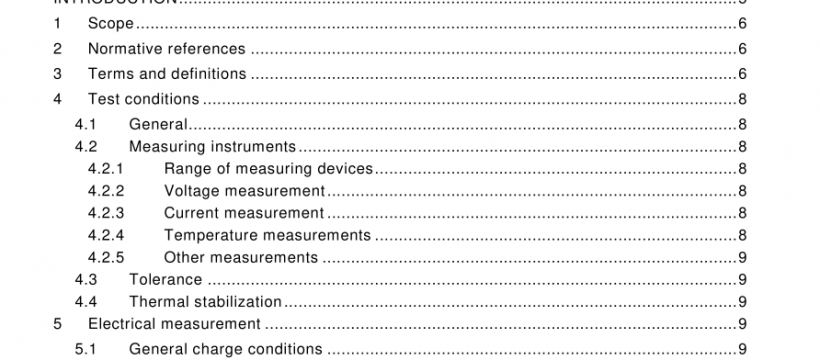EN IEC 62660-2:2019 pdf free download
EN IEC 62660-2:2019 pdf free download.Secondary lithium-ion cells for the propulsion of electric road vehicles
6.2.3.2 Test
The test shall be performed as follows.
a) Adjust the SOC of the cell to 1 00 % for BEV application and 80 % for HEV application in accordance with 5.3.
b) The cell shall be placed on an insulated flat surface and be crushed with a crushing tool consisting of a round or semicircular bar, or sphere or hemisphere with a 1 50 mm diameter. It is recommended to use the round bar to crush a cylindrical cell, and the sphere for a prismatic cell (see Figure 3). The force for the crushing shall be applied in a direction nearly perpendicular to a larger side of a layered face of positive and negative electrodes inside the cell. The crushing tool shall be selected so that the cell is deformed nearly in proportion to the increase of crushing force.
c) The force shall be released when an abrupt voltage drop of one-third of the original cell voltage occurs, or a deformation of 1 5 % or more of the initial cell dimension occurs, or the force of 1 000 times the weight of the cell is applied. The cells remain on test for 24 h or until the case temperature declines by 20 % of the maximum temperature rise, whichever is the sooner.
6.3.1 .2 Test
The test shall be performed as follows.
a) Adjust the SOC of the cell to 1 00 % for BEV application, and to 80 % for HEV application in accordance with 5.3.
b) The cell, stabilized at room temperature, shall be placed in a gravity or circulating air- convection oven. The oven temperature shall be raised at a rate of 5 K/min to a temperature of 1 30 °C. The cell shall remain at this temperature for 30 min before the test is discontinued. If necessary, to prevent deformation, the cell may be maintained during the test in a manner that does not violate the test purpose. The manner to prevent deformation should be representative of cells inside battery systems and battery packs.
EN IEC 62660-2:2019 pdf free download
